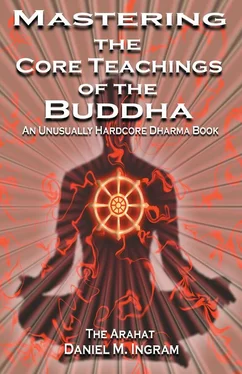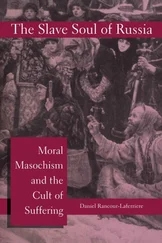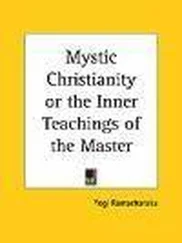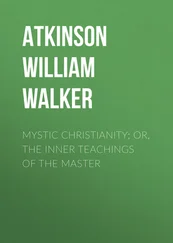Daniel Ingram - Mastering the Core Teachings of Buddha - An Unusually Hardcore Dharma Book
Здесь есть возможность читать онлайн «Daniel Ingram - Mastering the Core Teachings of Buddha - An Unusually Hardcore Dharma Book» весь текст электронной книги совершенно бесплатно (целиком полную версию без сокращений). В некоторых случаях можно слушать аудио, скачать через торрент в формате fb2 и присутствует краткое содержание. Год выпуска: 2009, ISBN: 2009, Издательство: Aeon Books, Жанр: Старинная литература, на русском языке. Описание произведения, (предисловие) а так же отзывы посетителей доступны на портале библиотеки ЛибКат.
- Название:Mastering the Core Teachings of Buddha - An Unusually Hardcore Dharma Book
- Автор:
- Издательство:Aeon Books
- Жанр:
- Год:2009
- ISBN:9781904658405
- Рейтинг книги:5 / 5. Голосов: 1
-
Избранное:Добавить в избранное
- Отзывы:
-
Ваша оценка:
- 100
- 1
- 2
- 3
- 4
- 5
Mastering the Core Teachings of Buddha - An Unusually Hardcore Dharma Book: краткое содержание, описание и аннотация
Предлагаем к чтению аннотацию, описание, краткое содержание или предисловие (зависит от того, что написал сам автор книги «Mastering the Core Teachings of Buddha - An Unusually Hardcore Dharma Book»). Если вы не нашли необходимую информацию о книге — напишите в комментариях, мы постараемся отыскать её.
Mastering the Core Teachings of Buddha - An Unusually Hardcore Dharma Book — читать онлайн бесплатно полную книгу (весь текст) целиком
Ниже представлен текст книги, разбитый по страницам. Система сохранения места последней прочитанной страницы, позволяет с удобством читать онлайн бесплатно книгу «Mastering the Core Teachings of Buddha - An Unusually Hardcore Dharma Book», без необходимости каждый раз заново искать на чём Вы остановились. Поставьте закладку, и сможете в любой момент перейти на страницу, на которой закончили чтение.
Интервал:
Закладка:
The Progress of Insight
circular definition completely unhelpful, formations have the following qualities when clearly experienced:
•
They contain all the six sense doors in them, including thought, in a way that does not split them up sequentially in time or positionally in space. If you could take a 3D moving photograph that also captured smell, taste, touch, sound, and thought, all woven into each other seamlessly and containing a sense of flux, this would
approximate the experience of one formation. From a fourth
vipassana jhana point of view and from a very high dharma point of view, formations are always what occur, and if they are not clearly perceived then we experience reality the way we normally do.
•
They contain not only a complete set of aspects of all six sense doors within them, but include the perception of space (volume) and even of time/movement within them.
•
When the fourth vipassana jhana is first attained, subtle mental sensations might again “split off” from “this side,” much as in the way of the Knowledge of Mind and Body, but with the Three
Characteristics of phenomena and the space they are a part of being breathtakingly clear. Until mental and physical sensations fully synchronize on “that side,” there can be a bit of a “tri-ality,” in which there is the sense of the observer “on this side,” and nearly the whole of body and mind as two fluxing entities “over there.” As mental phenomena and physical phenomena gradually integrate
with the sense of luminous space, this experientially begs the question, “What is observing formations?” at a level that is way beyond just talking about it. For you Khabbala correspondance fans, these insights correspond to the the three points of Binah, the two points of Chockmah, and finally the single point of Kether.
•
Formations are so inclusive that they viscerally demonstrate what is pointed to by the concept of “no-self” in a way that no other mode of experiencing reality can. As formations become predominant, we are faced first with the question of which side of the dualistic split we are on and then with the question of what is watching what earlier appeared to be both sides. Just keep investigating in a natural and matter-of-fact way. Let this profound dance unfold. If you have 207
The Progress of Insight
gotten to this point, you are extraordinarily close and need to do very little but relax and be gently curious about your experience.
•
When experienced at very high levels of concentration, formations lose the sense that they were even formed of experiences from distinguishable sense doors. This is hard to describe, but one might try such nebulous phrases as, “waves of suchness,” or “primal, undifferentiated experience.” This is largely an artifact of experiencing formations high up in the byproducts of the fourth vipassana jhana, i.e. the first three formless realms. This aspect of how formations may be experienced is not necessary for the
discussions below.
It is the highly inclusive quality of formations that is the most interesting, and leads to the most practical application of discussing formations. It is because they are so inclusive that they are the gateway to the Three Doors to stage 15. Fruition (see the chapter called The Three Doors). They reveal a way out of the paradox of duality, the maddening sense that “this” is observing/controlling/subject to/separated from/etc. a “that.” By containing all or nearly all of the sensations comprising one moment in a very integrated way, they contain the necessary clarity to see through the fundamental illusions.
One of the primary ways that the illusion of duality is maintained is that the mind partially “blinks out” for a part of each formation, the part it wants to section off to appear separate. In this way, there is insufficient clarity to see the interconnectedness and true nature of that part of reality, and a sense of a self is maintained. When the experience of formations arises, it comes out of a level of clarity that is so complete that this “blinking” can no longer easily occur. Thus, when formations become the dominant experience, even for short periods of time, very profound and liberating insight is close at hand. That is why there are systematic practices that train us to be very skilled in being aware of our whole mental and physical existence. The more we practice being aware of what happens, the less opportunities there are for blinking.
During the first three insight stages, we gained the ability to notice that mental and physical sensations made up our world, how they interacted, and then began to see the truth of them. We applied these skills to an object (perhaps not of our choice, but an object 208
The Progress of Insight
nonetheless), and saw it as it actually was with a high degree of clarity in the A&P. By this point, these skills in perceiving clearly have become so much of a part of who we are that they began to apply themselves to the background, space and everything that seemed to be a reference point or separate, permanent self as we entered the Dark Night. However, our objects may have been quite vague or too disconcerting to have been perceived clearly. Finally, we get to equanimity and put it all together: we can see the truth of our objects and of the whole background and are OK with this, and the result is the perception of formations.
Formations contain within them the seeming gap between this and that, as well as sensations of effort, intimacy, resistance, acceptance, and all other such aspects of sensations from which a sense of self is more easily inferred. Thus, these aspects begin to be seen in their proper place, their proper context, i.e. as an interdependent part of reality, and not split off or a self.
Further, the level of clarity out of which formations arise also allows one to see formations from the time they arise to the time they disappear, thus hitting directly at a sense of a self or sensate universe continuing coherently in time. In the first part of the path the beginning of objects was predominant. In the A&P we got a great sense of the middle of objects but missed subtle aspects of the beginning and end. In the Dark Night the endings are about all we could really perceive clearly. Formations once again put all of this work we have done together in a very natural and complete way.
Formations also explain some of the odd teachings that you might hear about “stopping thought.” There are three basic ways we might think about this dangerous ideal. We might imagine a world in which the ordinary aspects of our world which we call “thought” simply do not arise, a world of experience without those aspects of manifestation. You can get very close to this in very strong concentration states, particularly the 8th samatha jhana. We might also think of stopping experience entirely (as happens in Fruition), and this obviously includes thought.
Formations point to yet another possible interpretation of the common wish to “stop thought,” as do very high levels of realization.
The seeming duality of mental and physical sensations is gone by the 209
The Progress of Insight
time we are perceiving formations well. Thoughts appear as one luminous aspect of the phenomenal world. In fact, I challenge anyone to describe the bare experience of thinking or mental sensations in terms beyond those of the five “physical” sense doors. Thus, in the face of experiencing formations, it seems crude to speak in terms of thought as separate from those of visual, tactile, auditory, gustatory, and olfactory qualities, or even to speak in terms of these being separate entities.
When perceived clearly, what we usually call “thoughts” are seen to be just aspects of the manifesting sensate world that we artificially select out and label as thought. Just as it would be odd to imagine that an ocean with many shades of blue is really many little bits of ocean, in times of high clarity it is obvious that there is manifesting reality, and it is absolutely inclusive. Look at the space between you and this book. We don’t go around selecting out little bits of space and labeling them as separate. In the face of formations, the same applies to experience, and experience obviously includes the sensations we call thought.
Читать дальшеИнтервал:
Закладка:
Похожие книги на «Mastering the Core Teachings of Buddha - An Unusually Hardcore Dharma Book»
Представляем Вашему вниманию похожие книги на «Mastering the Core Teachings of Buddha - An Unusually Hardcore Dharma Book» списком для выбора. Мы отобрали схожую по названию и смыслу литературу в надежде предоставить читателям больше вариантов отыскать новые, интересные, ещё непрочитанные произведения.
Обсуждение, отзывы о книге «Mastering the Core Teachings of Buddha - An Unusually Hardcore Dharma Book» и просто собственные мнения читателей. Оставьте ваши комментарии, напишите, что Вы думаете о произведении, его смысле или главных героях. Укажите что конкретно понравилось, а что нет, и почему Вы так считаете.












